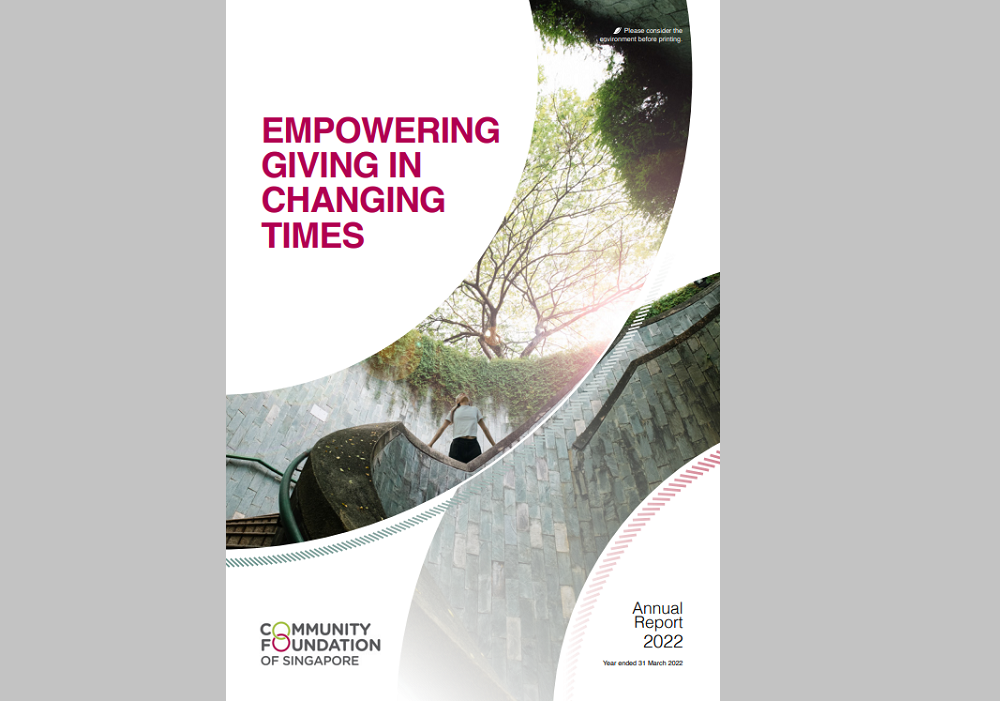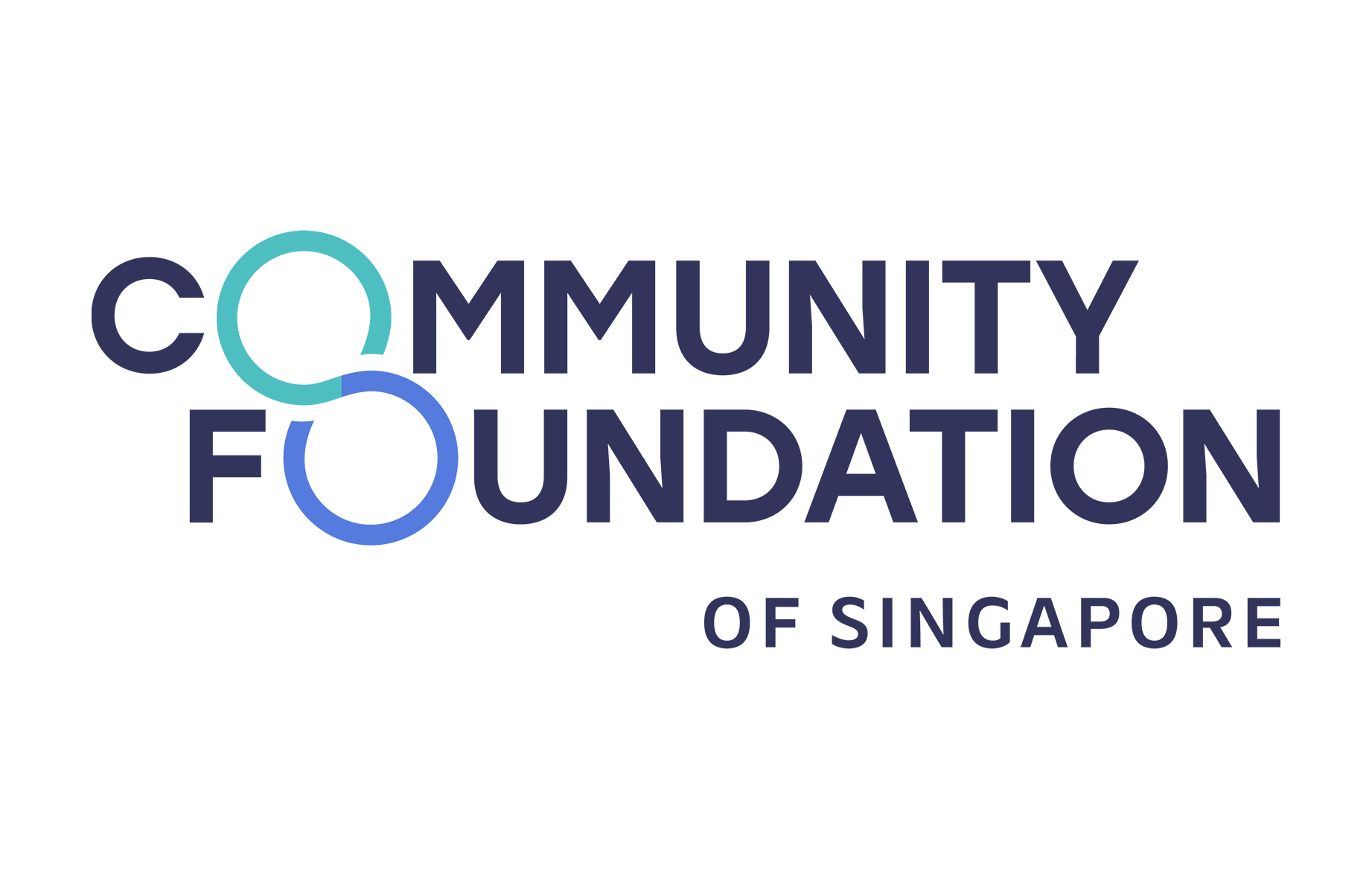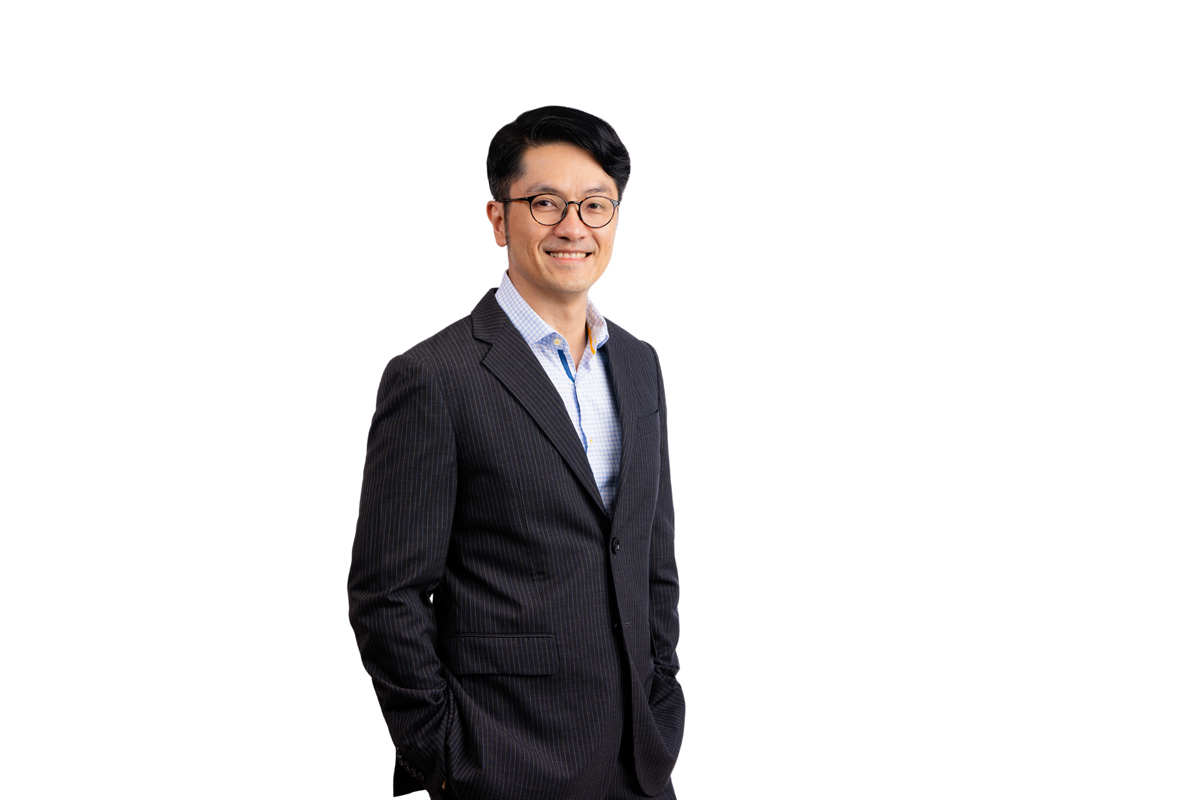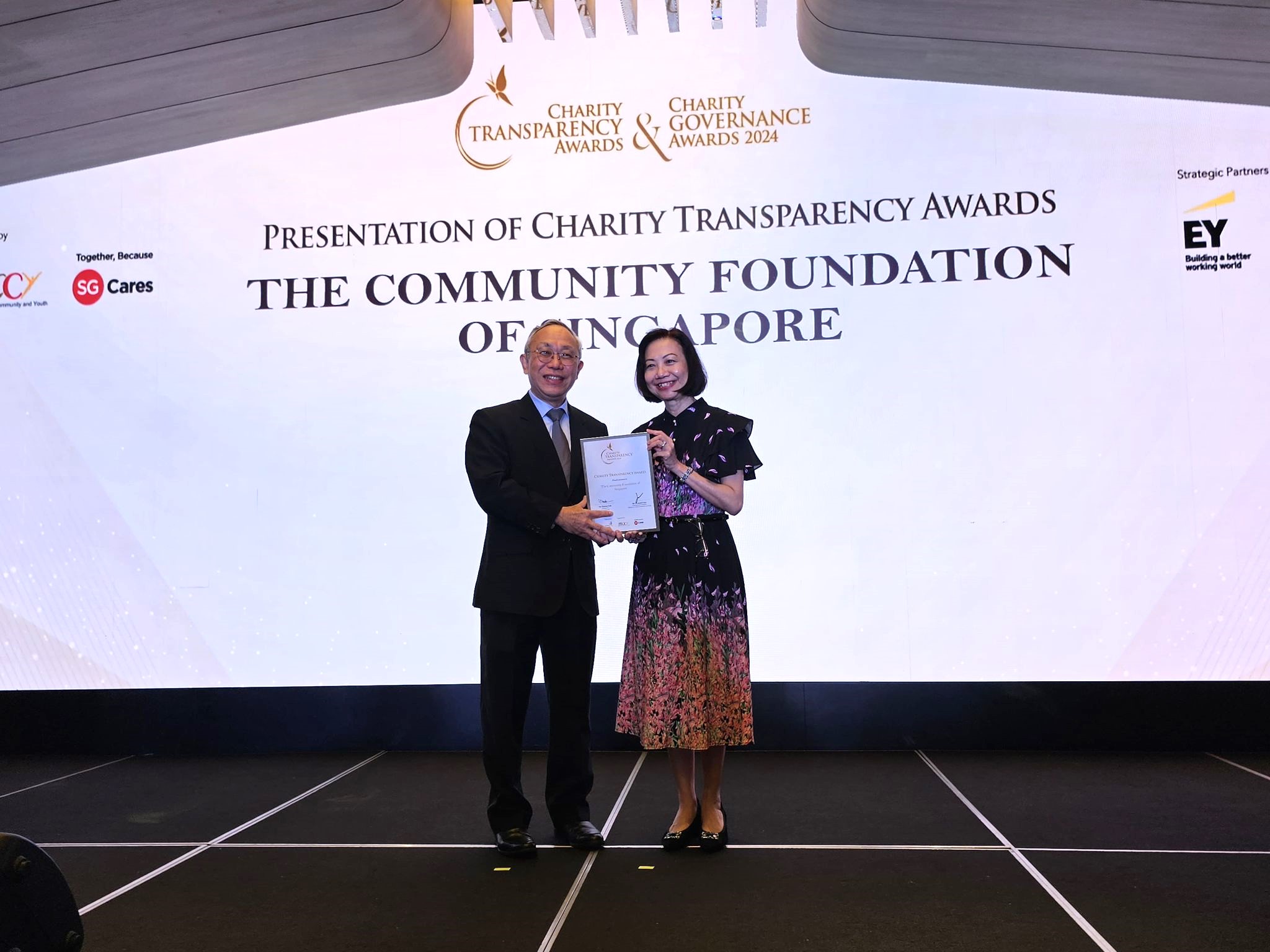Our Annual Report 2022 is now available for download


We are proud to announce that the Community Foundation of Singapore (CFS) Annual Report 2022 has been published.
Download your copy here to learn more about the year’s highlights and our impact on the community.
Amid continued disruption from COVID-19 and the uneven recovery that followed, we took transformative action to push forward with our donors, charities and partners. We saw a record number of new funds and unprecedented donor generosity. Together, our grantmaking supported the immediate and emergent needs of our beneficiaries and partners.
For the financial year ended 31 March 2022, CFS received a record of $46.6 million in donations. We welcomed 37 givers to our community through the establishment of 24 new donor-advised funds (DAFs). $18.3 million in grants was made to 240 organisations and 14 individuals during the financial year.
The Annual Report contains the following information:
- Corporate Information
- Growth in Recent Years
- Impact Highlights and Transformation
- Corporate Sustainability
- Forward Vision
- Governance and Policies
- Financial Statements
- Grantees List
CFS is committed to working with donors, charities, partners and various sector leaders in the ecosystem to build a more vibrant, inclusive and caring Singapore. To find out more about CFS, get in touch with us.
We are proud to announce that the Community Foundation of Singapore (CFS) Annual Report 2022 has been published.
Download your copy here to learn more about the year’s highlights and our impact on the community.
Amid continued disruption from COVID-19 and the uneven recovery that followed, we took transformative action to push forward with our donors, charities and partners. We saw a record number of new funds and unprecedented donor generosity. Together, our grantmaking supported the immediate and emergent needs of our beneficiaries and partners.
For the financial year ended 31 March 2022, CFS received a record of $46.6 million in donations. We welcomed 37 givers to our community through the establishment of 24 new donor-advised funds (DAFs). $18.3 million in grants was made to 240 organisations and 14 individuals during the financial year.
The Annual Report contains the following information:
- Corporate Information
- Growth in Recent Years
- Impact Highlights and Transformation
- Corporate Sustainability
- Forward Vision
- Governance and Policies
- Financial Statements
- Grantees List
CFS is committed to working with donors, charities, partners and various sector leaders in the ecosystem to build a more vibrant, inclusive and caring Singapore. To find out more about CFS, get in touch with us.
- Related Topics For You: ANNUAL REPORT, DONOR STORIES, DONOR-ADVISED FUND



